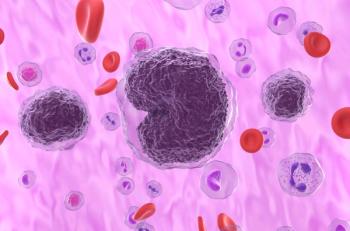
CDC Launching Surveillance System to Study Multiple Sclerosis, Other Neurological Conditions
With $5 million appropriated from Congress, CDC is launching a National Neurological Conditions and Surveillance System to help increase understanding of neurological disorders and to further support neurologic research, starting with multiple sclerosis and Parkinson disease.
While the CDC gained authorization from Congress to initiate the development of the system as part of the 21st Century Cures Act in 2016, it was not funded until the fiscal year 2019 spending bill for HHS was signed in September. Congress has appropriated $5 million for the 2019 fiscal year.
The system will initially focus on 2 disorders—multiple sclerosis (MS) and Parkinson disease—and will be carried out in 3 stages in collaboration with partners and stakeholders. CDC will initially conduct demonstration projects using the 2 conditions to determine how it can have the biggest impact by exploring innovative methods and complex data sources. They will also determine which approaches will help efficiently expand the NNCSS to include other neurological conditions.
During the second stage, the CDC will build out the system for the 2 conditions utilizing successful approaches from the demonstration projects, as well as checking methods, costs, and opportunities. The last stage will use lessons learned to extend the system to other neurological conditions, as resources allow.
The announcement was welcome by patients with MS and MS organizations, who believe that by collecting and analyzing the data in the system, it may be possible to identify triggers of the conditions that are not yet known.
“I can’t help but wonder if my daughter will hear ‘you have MS’ someday; my current neurologist says that her chance is 1 in 40. Without real, current data, MS researchers have difficulty identifying and pursuing potential leads of environmental or viral triggers,” said Rebecca, a patient from Detroit who was diagnosed with MS in 2013,
According to the society, NNCSS builds upon successes from the society’s prevalence initiative, a 4-year study that used millions of health records to get a more accurate count of how many people in the United States are living with MS.
Preliminary findings from the study demonstrated that the prevalence is likely more than twice the number previously thought.
“This information gleaned from the society’s prevalence initiative combined with the data from the NNCSS will help us better understand MS—who get it and possible reason why,” said Bari Talente, executive vice president of advocacy, National MS Society, in a statement. “We look forward to working with the CDC to make sure the NCSS collects information on incidence, age, race, ethnicity data, as well as geographic data that can help refine and target research we hope will lead to a cure.”
Newsletter
Stay ahead of policy, cost, and value—subscribe to AJMC for expert insights at the intersection of clinical care and health economics.













































